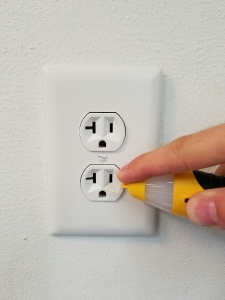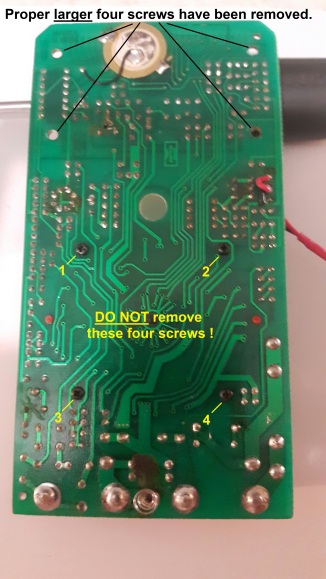Gardner Bender
Electrical Conduit Benders carry a 1 year limited warranty.
Hydraulic Conduit Benders carry a 1 year limited warranty.
Mechanical Conduit Benders carry a 1 year limited warranty.
Hand Conduit Benders carry a lifetime limited warranty.
PVC HotBlankets carry a 90 day warranty.
Cable Fishing equipment carry a 1 year limited warranty.
Hole Making Equipment carry a 1 year limited warranty.
Hand Tools carry a 1 year limited warranty.
Gardner Bender Test Instruments carry a 1 year limited warranty.
Wire Connectors carry a 1 year limited warranty.
Terminals & Wire carry a 1 year limited warranty.
Switches carry a 1 year limited warranty.
Cable Ties carry a 1 year limited warranty.
Staples carry a 1 year limited warranty.
Wire Management products carry a 1 year limited warranty.
Voice – Data – Video products carry a 1 year limited warranty.
The Circuit Alert and Armor Edge
These tools carry a limited lifetime warranty.
Limited
Limited means that GB warrants to the original purchasers of products from GB and Sperry Instruments authorized distributors at the time of shipment such products shall be free of defects in material and workmanship while the tool is used under normal working conditions. Standard wear and tear, dulling over time, overloading, misuse, and acts of God are not covered under warranty. This warranty does not cover batteries, fuses, or test leads.
When a warranty claim arises, the purchaser must contact GB. If the defect comes under the terms of this limited warranty, GB will arrange , at its sole discretion, one of the following options:
-The product will be repaired at an authorized GB Service Center
-Product will be replaced
The purchaser is solely responsible for determining the suitability of GB/Sperry products for the purchaser’s use or resale, or for incorporating them into articles or using them in the purchaser’s applications. The distributor is authorized to extend the foregoing limited warranty to its original purchasers in connection with the sales of GB products, provided that such products shall not have been altered by the distributor. The distributor shall be fully responsible for any warranties the distributor makes to its purchasers which are broader or more extensive than GB limited warranty.
Lifetime Warranty
Warranty Limitation: The forgoing warranties are exclusive and are in lieu of all other express and implied warranties whatsoever, including but not limited to implied warranties of merchantability and fitness for a particular purpose. The foregoing warranties do not cover ordinary wear and tear, abuse, misuse, overloading, alterations, products which have not been installed, operated or maintained in accordance with GB/Sperry’s written instructions. Test leads, fuses, and batteries are not covered under any implied warranty. “Lifetime” of products that are no longer offered by GB will be either repaired or replaced with an item of GB Instruments choice of similar value. Lifetime is defined as 5 years after GB discontinued manufacturing the product, but the warranty period shall be at least ten years from date of purchase. Original proof of purchase is required to establish original ownership of product.
No warranty will be honored unless an invoice or other proof of purchase date is provided to Gardner Bender. Hand written receipts or invoices will not be honored.
All questions or concerns regarding our warranty should be forwarded to GardnerBender EMAIL!







 Instructions on how to replace the fuse inside the GDT-292A. These instructions will also work for the other versions of the meter: GDT-293A, 294A, & 295A. This is an older multimeter that we no longer manufacture, but we would still like to make people aware of how to replace the fuses safely without altering the multimeter in a way that could make using it dangerous. Luckily for us the customer was able to supply these pictures for others who may need help in the future.
Instructions on how to replace the fuse inside the GDT-292A. These instructions will also work for the other versions of the meter: GDT-293A, 294A, & 295A. This is an older multimeter that we no longer manufacture, but we would still like to make people aware of how to replace the fuses safely without altering the multimeter in a way that could make using it dangerous. Luckily for us the customer was able to supply these pictures for others who may need help in the future.
 For protection against fire or injury the fuse(s) should be removed without causing damage to nearby components and should only be replaced with fuse(s) of the same specified voltage and current ratings as specified in this Operator’s Manual.
For protection against fire or injury the fuse(s) should be removed without causing damage to nearby components and should only be replaced with fuse(s) of the same specified voltage and current ratings as specified in this Operator’s Manual. Refer to the two photos above. One black and three red rubber insulators surround the four jacks that the leads can plug into. The insulators are held in place against the PCB by the front cover. Upon dis-assembly one or more of the colored insulators may get stuck in the cover (in this dis-assembly one red and one black insulator were stuck to the cover). For ease of re-assembly, the stuck insulators can easily be pressed out of the cover and put into place on the PCB (wide end toward the PCB) as the two red ones in these photos are. Just remember, the BLACK rubber insulator goes on the post of the PCB labeled “COM” (of course). These insulators ensure a snug fit of the leads without using split-tip leads that lose their tension over time.
Refer to the two photos above. One black and three red rubber insulators surround the four jacks that the leads can plug into. The insulators are held in place against the PCB by the front cover. Upon dis-assembly one or more of the colored insulators may get stuck in the cover (in this dis-assembly one red and one black insulator were stuck to the cover). For ease of re-assembly, the stuck insulators can easily be pressed out of the cover and put into place on the PCB (wide end toward the PCB) as the two red ones in these photos are. Just remember, the BLACK rubber insulator goes on the post of the PCB labeled “COM” (of course). These insulators ensure a snug fit of the leads without using split-tip leads that lose their tension over time.